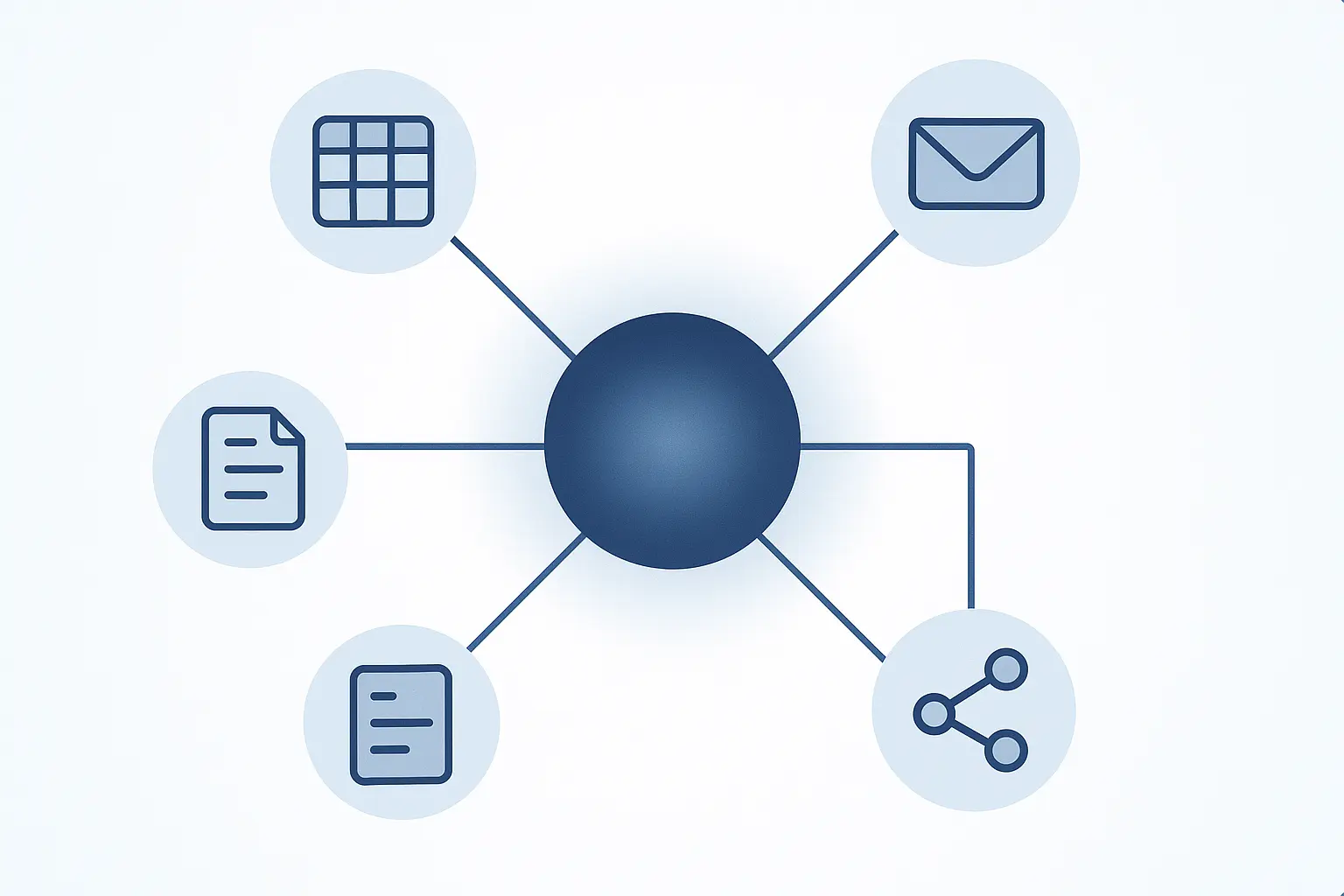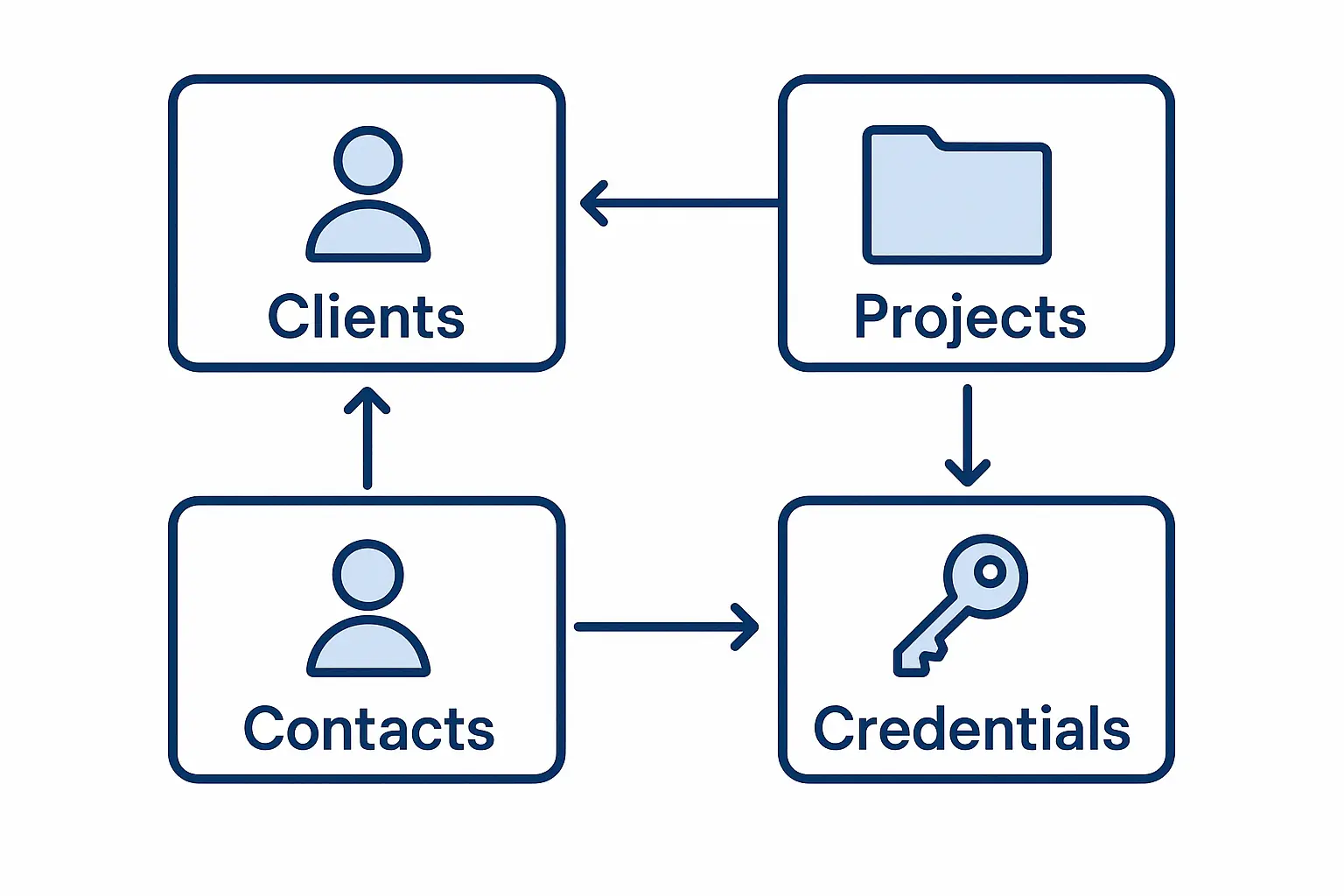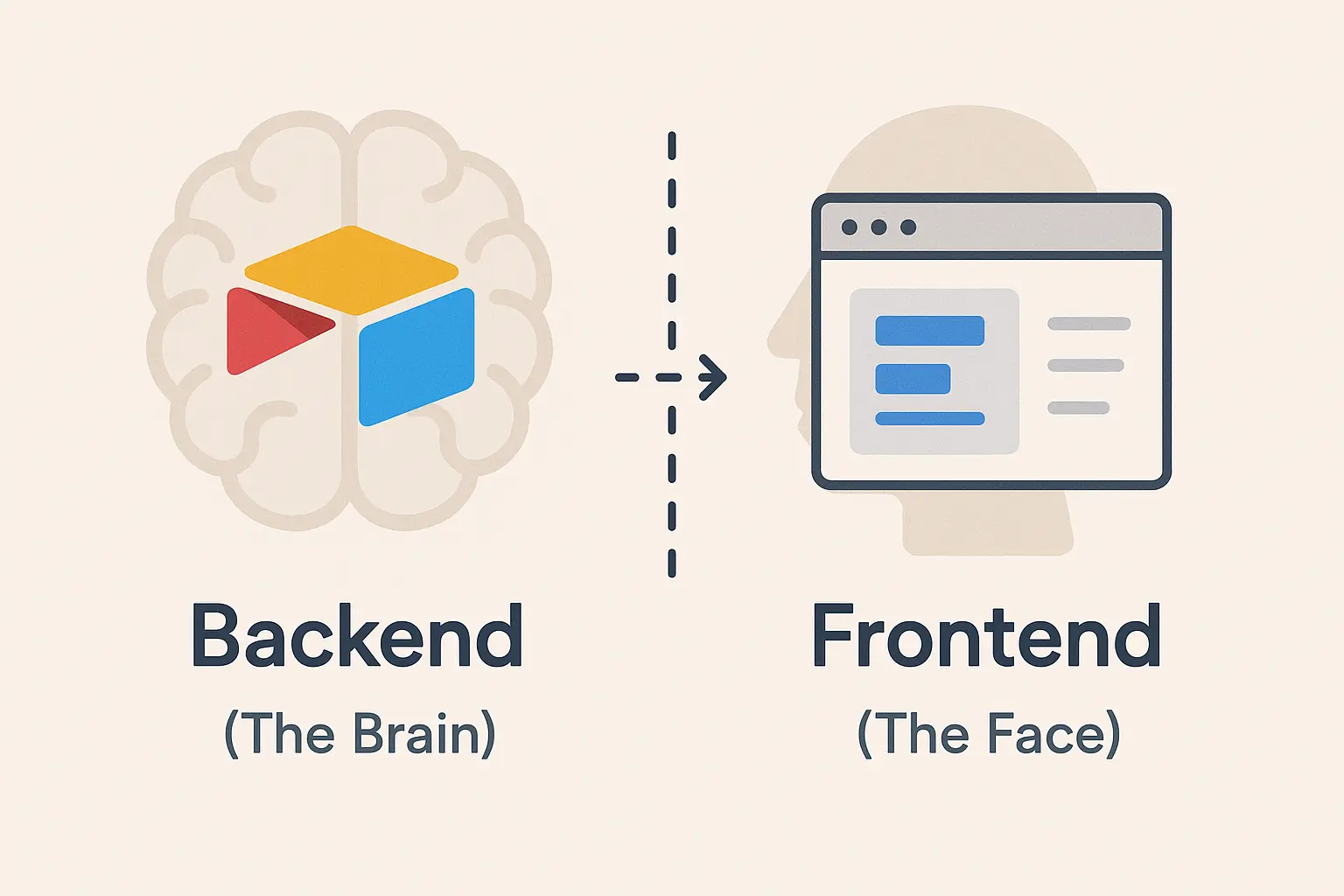Let’s be honest: does this sound familiar?
You’re trying to find the login for a client’s Google Analytics. You check your password manager, search your email, and then dig through a Slack DM from three months ago. Finally, you find it in a forgotten spreadsheet named clientinfoFINAL_v2.xlsx.
This daily scavenger hunt for information isn’t just frustrating; it’s a silent killer of agency profitability. That friction is what keeps you from growing. You’re not disorganized—your system is. Or rather, your lack of one.
The problem is information fragmentation, and it’s more common than you think. Research shows that the average employee spends a staggering 2.5 hours per day just searching for the information needed to do their job. Even worse, 49% of workers report wasting ‘a great deal of time’ simply locating documents.
For a growing agency, that lost time translates directly into lost revenue and capacity—an invisible ceiling on your growth. The solution isn’t another spreadsheet. It’s a shift in thinking: you need to build a ‘Single Source of Truth’ (SSoT).
What is a Single Source of Truth (and Why Spreadsheets Aren’t It)?
A Single Source of Truth is a simple but powerful idea: one central, trusted place where all your critical agency and client information lives. It’s the command center for your operations, accessible to everyone who needs it.
For years, we’ve tried to force-fit this role onto spreadsheets. But spreadsheets are digital filing cabinets. They’re great for storing static information in isolated folders but terrible at showing you how that information connects.
They can’t easily link a client to their specific projects.
They don’t update dynamically across different views.
They become a complex web of VLOOKUPs that break if someone sneezes too close to their keyboard.
This is where a tool like Airtable comes in. Think of it less like a spreadsheet and more like building with LEGOs. It’s a relational database that looks and feels as friendly as a spreadsheet but has the power to connect everything, creating a true operational hub.
The Anatomy of a Scalable Client Hub
Building your SSoT in Airtable isn’t about creating one giant, overwhelming table. Instead, it’s about creating several specialized tables that talk to each other. This structure is the foundation of a scalable SEO workflow that can grow with your agency.
Here are the core components of a powerful agency command center.

The Clients Table: Your Agency’s Rolodex
This is the foundation of your entire hub. Every other piece of information will link back to a client record here. It’s where you store high-level relationship information.
Essential Fields to Include:
- Client Name: The official name of the business.
- Primary Contact: Name, email, and phone number.
- Website URL: The client’s main domain.
- Status: A single-select field with options like Onboarding, Active, Paused, or Completed. This allows you to filter and create views for just your active clients.
- Monthly Retainer: A currency field to keep track of project value.
- Services: A multi-select field for SEO, PPC, Content, Web Design, etc.
- Linked Records: This is the magic. You’ll have fields here that link to records in your other tables (like Projects, Credentials, and Reports).

The Projects & Tasks Tracker: The Action Center
This is where the work happens. Instead of using a separate project management tool that’s disconnected from your client data, you build it right into your SSoT.
Each client in your Clients table can be linked to multiple projects or tasks in this table. This gives you a bird’s-eye view of your entire agency’s workload and lets you zoom in on a single client’s progress.
Essential Fields to Include:
- Task/Project Name: e.g., “Q3 Technical SEO Audit” or “Monthly Blog Post – May”.
- Linked Client: A link to the relevant record in your Clients table.
- Assignee: Who on your team is responsible?
- Due Date: A date field to keep deadlines clear.
- Status: A single-select field, perfect for a Kanban view: To Do, In Progress, For Review, Complete.
This is where you start to see the true power of an SSoT. You can instantly see every task associated with a specific client or view all tasks due this week across the entire agency, all from one place. This level of organization is crucial for automating repetitive tasks and focusing your team on high-value strategic work.

The Credentials Vault: Secure & Accessible
Stop hunting for logins. This table acts as a secure directory for all client credentials. Each entry should be linked back to the corresponding client.
A quick but important note on security: For maximum security, use this table to reference where the password is stored (e.g., in your team’s password manager like 1Password or LastPass), rather than storing the actual passwords in plain text.
Essential Fields to Include:
- Platform: e.g., “WordPress Admin”, “Google Analytics”, “SEMrush”.
- Username/Email: The login credential.
- Login URL: A direct link to the login page.
- Notes: Any important details, like 2FA instructions or the name of the vault where the password is saved.
- Linked Client: Connects this credential back to the right client.
So when a team member needs access to a client’s site, they don’t have to ask. They go to the SSoT, find the client, and see all the credential information they need in one organized place.
The “Aha Moment”: It’s More Than Just Organization
Building a Single Source of Truth isn’t just a tidying-up exercise. It’s a fundamental business transformation that unlocks scalability.
When your information is centralized and interconnected, you gain:
- Operational Efficiency: Remember that 2.5 hours employees spend searching for information each day? That wasted time is virtually eliminated. Time spent searching becomes time spent executing.
- Enhanced Client Experience: Onboarding is smoother. Communication is clearer. You never have to ask a client for the same login twice, which builds confidence and professionalism.
- True Scalability: You can’t scale chaos. A system like this is the bedrock for growth. It allows you to add new clients and team members seamlessly without breaking your processes, making it the first and most critical step in scaling your agency effectively.
Your agency’s command center turns reactive scrambling into proactive strategy. It gives you the clarity and control needed to move from working in your business to working on it.
Frequently Asked Questions (FAQ)
Is Airtable secure enough for client credentials?
While Airtable has robust security features, it’s best practice to never store sensitive passwords in plain text anywhere. Use your Airtable hub as a directory that points to your encrypted password manager (like 1Password, LastPass, or Bitwarden). This gives you the organizational benefit without compromising security.
How is this different from a project management tool like Asana or Trello?
Project management tools are excellent for task management but often lack the database capabilities to serve as a true hub. They manage the “what” and “when,” but an SSoT in Airtable manages the “what,” “when,” “who,” and “why” by linking tasks directly to client contracts, credentials, reports, and other core business data. It connects the work to the relationship.
This looks complicated. How long does it take to set up?
The beauty of this approach is that you can start small. You can build the foundational Clients table in under an hour. From there, you can add the Tasks or Credentials tables once you’re comfortable. Start with your biggest pain point and build from there. Don’t aim for perfection on day one; aim for progress.
Can I use a different tool, like Notion or ClickUp?
Absolutely. The principle of a Single Source of Truth is tool-agnostic. The key is to choose a tool with relational database features that allow you to link different types of information together. While we’ve focused on Airtable here, the same core structure can be built in other modern productivity platforms.
Your Next Step: From a Solid Foundation to Scalable Growth
Building an operational hub is the single most impactful step you can take to bring order to the chaos of agency life. It frees up your team’s time, elevates your client service, and lays the essential groundwork for future growth.
Once you have this system in place, you can start asking the next big question: “How do we scale the work itself?” Your new SSoT will give you the clarity to pinpoint your biggest bottlenecks and identify your greatest opportunities for growth.

